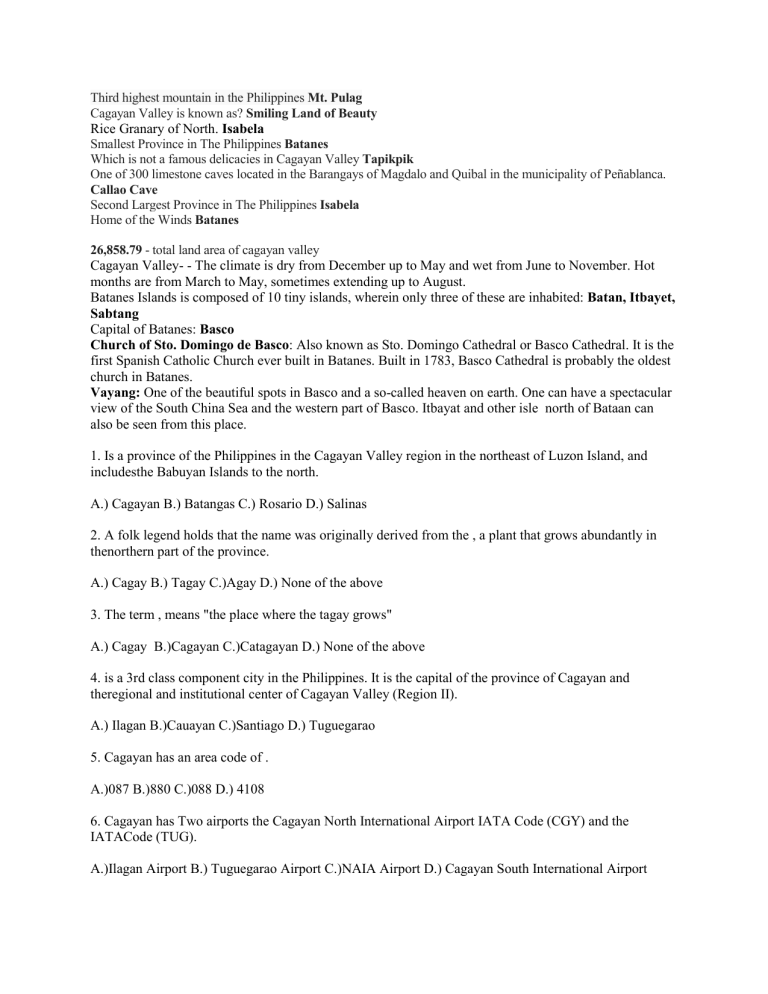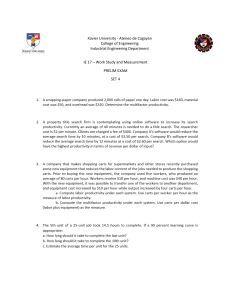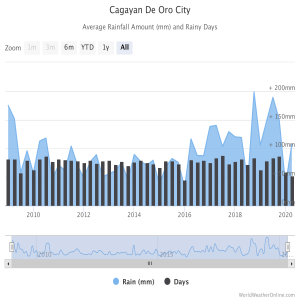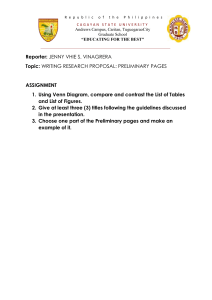
Third highest mountain in the Philippines Mt. Pulag Cagayan Valley is known as? Smiling Land of Beauty Rice Granary of North. Isabela Smallest Province in The Philippines Batanes Which is not a famous delicacies in Cagayan Valley Tapikpik One of 300 limestone caves located in the Barangays of Magdalo and Quibal in the municipality of Peñablanca. Callao Cave Second Largest Province in The Philippines Isabela Home of the Winds Batanes 26,858.79 - total land area of cagayan valley Cagayan Valley- - The climate is dry from December up to May and wet from June to November. Hot months are from March to May, sometimes extending up to August. Batanes Islands is composed of 10 tiny islands, wherein only three of these are inhabited: Batan, Itbayet, Sabtang Capital of Batanes: Basco Church of Sto. Domingo de Basco: Also known as Sto. Domingo Cathedral or Basco Cathedral. It is the first Spanish Catholic Church ever built in Batanes. Built in 1783, Basco Cathedral is probably the oldest church in Batanes. Vayang: One of the beautiful spots in Basco and a so-called heaven on earth. One can have a spectacular view of the South China Sea and the western part of Basco. Itbayat and other isle north of Bataan can also be seen from this place. 1. Is a province of the Philippines in the Cagayan Valley region in the northeast of Luzon Island, and includesthe Babuyan Islands to the north. A.) Cagayan B.) Batangas C.) Rosario D.) Salinas 2. A folk legend holds that the name was originally derived from the , a plant that grows abundantly in thenorthern part of the province. A.) Cagay B.) Tagay C.)Agay D.) None of the above 3. The term , means "the place where the tagay grows" A.) Cagay B.)Cagayan C.)Catagayan D.) None of the above 4. is a 3rd class component city in the Philippines. It is the capital of the province of Cagayan and theregional and institutional center of Cagayan Valley (Region II). A.) Ilagan B.)Cauayan C.)Santiago D.) Tuguegarao 5. Cagayan has an area code of . A.)087 B.)880 C.)088 D.) 4108 6. Cagayan has Two airports the Cagayan North International Airport IATA Code (CGY) and the IATACode (TUG). A.)Ilagan Airport B.) Tuguegarao Airport C.)NAIA Airport D.) Cagayan South International Airport 7. is a small town is founded in 1852 along the Cagayan River and in 2001, converted to a component city. A.) Ilagan B.)Cauayan C.)Santiago D.) Tuguegarao 8. it has a population of 145,568 people making it the most populous city in the province of Cagayan . A.) Ilagan B.)Cauayan C.)Santiago D.) Tuguegarao 9. is a 1st class independent component city in Cagayan Valley, Philippines. A.) Ilagan B.)Cauayan C.)Santiago D.) Tuguegarao 10. It is the capital of the province of Cagayan and the regional and institutional center of Cagayan Valley. A.) Ilagan B.)Cauayan C.)Santiago D.) Tuguegarao 11. Majority (76.15 percent) of the population of Cagayan Valley Region were . A.)Roman Catholics B.)Evangelicas C.)Aglipayans D.) Muslim 12. a native suman delicacy of the province made of sticky rice flour and wrapped in banana leaves. A.) Binallay B.)Bibingka C.)Moriecos D.) Suman De Cagayan 13. This variety of rice cake (kakanin in Tagalog) is stuffed with latik or caramelized young coconut then steamed andwrapped in fresh banana leaf. A.) Binallay B.)Bibingka C.)Moriecos D.) Suman De Cagayan 14. This Ilokano dish has a soup base made of bagoong isda (fermented fish paste) and mixed with local vegetables andsome grilled or fried fish. A.)Sinigang B.) Paksiw C.)Pinataro D.) Dinengdeng 15. Cagayan traditional dance is called . A.)Jataw De Cagayan B.) Jota De Cagayan C.)Cagayan Dance D.) None of the above 16. The is a festival held each year in Cagayan de Oro, Philippines, every 28th day of August, celebratingthe feast day of St. Augustine – patron saint of the city. A.)Higalay Festival B.)Sambali Festival C.)Sinabalu Festival D.) Fluvial Parade 17. Higalaay Festival means " Festival", which the word "Higalaay" comes from the Cebuano word "higala". A.)Friendship B.)Happy C.)Patriotism D.) None of the above 18. The Festival is celebrated every year in Piat, Cagayan from June 23 to July 2. A spectacle of color,form and movement and songs is to be expected in this celebration, all brought about centuries-old cultural traditions. A.)Higalay Festival B.)Sambali Festival C.)Sinabalu Festival D.) Fluvial Parade 19. dance which is a war dance of the Itawis tribe of Cagayan that was converted to Christianity through theintercession of the Lady of Piat. A.)Higala B.)Sambali C.)Sinabalu D.) None of the Above 20. This festival is celebrated in the Malueg town by cooking a glutinous rice with coconut cream cooked on bamboosand roasted in open fire in the town square. A.)Higalay Festival B.)Sambali Festival C.)Sinabalu Festival D.) Fluvial Parade 21. It is a local festival featuring a fluvial procession of about a hundred boats of different size and shape in thanksgivingto their Patron Saint, St. Peter Thelmo. A.)Higalay Festival B.)Sambali Festival C.)Sinabalu Festival D.) Fluvial Parade 22. This national shrine has earned the distinction as the Pilgrimage Center of the North. A.) Holy Cross Parish B.)Sambali Church C.)Tuguegarao Church D.) None of the Above 23. is known not only for its booming furniture industry but also for its magnificent cave systems like theDuba Caves and Blue Water Caves where the 5th National Caving Congress. A.)Tabon Cave B.)Kaybiang Cave C.)Tuguegarao Cave D.) Baggao Cave 24. Features larger-than life concrete statues in tableau setting of the 14 Stations of the Cross A.) Iguig Calvary Hills B.)Kamay ni Jesus C.)Cagayan Hills D.) Baggao Hills 25. This is the only one of its kind in the Philippines, and is the first suspension bridge in Asia. A.) Iguig Suspension Bridge B.) Magapit Suspension Bridge C.)Cagayan Suspension Bridge D.) None of the Above 26. What is the thugline of Cagyaan ? A.) It’s more fun in Cagayan B.) Your Islands and Valley of FUN C.) Your FUN in our Islands D.) None of the Above 27. Etymological scholars hold that cagayan comes from an ancient word that means ? A.) Bridge B.) Tagay C.)River D.) None of the Above 28. This beauty is located in Sta. Praxedes. It is a captivating scenic spot that provides a display of the beautiful flora ofthe place. A.) Maria Cristina Falls B.) Magapit Falls C.)Sta. Praxedes Falls D.) Portabaga Falls 29. This dish is a sumptuous combination of lamb lechon which is marinated in oyster sauce, lemon juice, and red wine.It’s also the same marinade that will be injected inside the lechon. A.)Lechon Paksiw B.) Lechon Cordero C.)Lechon kawali D.) None of the above 30. The province borders Ilocos Norte and Apayao to the west, and Kalinga and Isabela to the south. Its capital is the city of Tuguegarao. A.)Cagayan B.) Iligan C.)Santiago D.) Di ka mahal ng nanay mo Province of Cagayan brief history Brief History ARCHEOLOGICAL FINDINGS dating back to the Paleolithic Age indicate that the ancestors of modern humans had settled in Cagayan as early as 500,000 years ago. Man may have followed large mammals into the valley in search of game. The Agtas were probably the first modern humans to populate the vast Cagayan Valley region, followed by various Malayo-Polynesian groups who settled in the Cagayan plains and established culturally similar but ethically distinct communities. Spanish explorer Juan de Salcedo explored the coast of Cagayan in 1572 and found the people conducting trade with Chinese and Japanese merchants. In 1582, after driving away Japanese pirates who had settled along the Cagayan coast, the Spaniards decided to settle in Lallo, which they renamed Nueva Segovia. In 1595, Nueva Segovia became the seat of a diocese, which covered the entire northern Luzon. The pacification and settlement of the Cagayan proceeded slowly because of the hostility of the natives who were indisposed to colonization. Christian evangelization began in 1596 with the arrival of Dominican missionaries in Cagayan. Revolts continued to rock the province and threatened to supplant the Spanish colonial government in the area. These revolts found a continuing reservoir of support from the unconverted highland peoples who continually harassed the Christian settlement of the valley. In the late 18th century, Cagayan felt the full impact of the tobacco monopoly. Cultivation of tobacco, which was an important article of trade and consumption, was initially prohibited. Anti-monopoly revolts broke out in 1787 and many settlements near the highlands were abandoned by natives who wanted to continue cultivating tobacco. Ten years later, tobacco cultivation was allowed in the valley and Cagayan soon became the single largest source of the cash crop in the archipelago. Ilokano migration into the valley facilitated the expansion of agriculture in the region. By the middle of the 19th century, the great number of Ilokano settlers allowed the Iloko language to supplant Ybanag as the regional lingua franca. Under the Spaniards, the whole northeastern part of the island of Luzon, plus some small islands in the Balintang Channel constituted a single province of Cagayan. In 1839 the southern half of the valley was formed into a politico-military district of Nueva Vizcaya. In 1856, parts of Cagayan and Nueva Vizcaya were formed into the province of Isabela. Cagayan lost more territory with the formation of the partido of Itawes in 1889 and the comandancia of Apayao in 1890. The Americans delineated the present day limits of Cagayan in 1908. In 1901, the United States Philippine Commission enacted Act No. 209 which in effect established the Provincial Government of Cagayan. In 1917, as contained in Act No. 2711, Cagayan was recognized as a grand division of the Philippine Islands. The province then comprised of 24 municipalities with Tuguegarao as its capital town. During the Second World War, Japanese units landed in Aparri town a few days after the bombing of Pearl Harbor in December 1941. The valley again figured prominently in the plans of Japanese forces to defend it as a secure line of retreat to Taiwan in 1945. Filipino guerillas and American forces from Ilocos formally drove the Japanese to the Cordilleras. Cagayan Valley With a total land area of 26,388 square kilometers the Cagayan Valley is the second largest region in the Philippines. Region 2 or the Cagayan Valley region is strategically located on the northeastern part of mainland Luzon. It is bounded to the west by the Cordillera mountain range, to the east by the Sierra Madre, to the south by the Caraballo Mountains, and to the north by the Luzon Strait. The region consists of five provinces: the valley provinces of Cagayan and Isabela, the mountain provinces of Quirino and Nueva Vizcaya, and the island province of Batanes; with 89 municipalities, four cities and 2,311 barangays. It has 10 congressional districts. Cagayan Valley has a total land area of over 2.6 million hectares which consists of more than 900 thousand hectares of alienable and disposable land and over 1.7 hectares of forest land with a forest cover of more than 1 million hectares, the largest forest cover in the Philippines. Rich in coastal resources, Region 2 has a total of 5,640 hectares of mangrove, 15,437 hectares corals and 4,089 hectares of seagrasses. It is the fourth largest region of the country accounting for about nine percent of the national land area. It has 14 nationally proclaimed protected areas covering 997,466 hectares: Batanes Protected Landscape and Seascape; Peñablanca Protected Landscape and Seascape, Magapit Protected Landscape, Palaui Island Protected Landscape and Seascape, Baua Watershed Forest Reserve and Wangag Watershed Forest Reserve in Cagayan; Tumauini Watershed Natural Park, Fuyot Spring National Park and Northern Sierra Madre Natural Park in Isabela; Salinas Natural Monument, Dupax Watershed Forest Reserve, Casecnan Protected Landscape and Bangan Hill National Park in Nueva Vizcaya; and Quirino Protected Landscape. The Valley is dissected by the Cagayan River, the longest river and largest basin in the country. It has a total stretch of about 520 kilometers from its source in Kasibu, Nueva Vizcaya down to its mouth in Aparri, Cagayan. It has a drainage area of almost 2.8 million hectares that extends to the Cordillera Administrative Region. Based on the 2015 census, Region 2 has a population of 3.4 million or about 3.4 percent of the total population of the country. Review !!! https://kapuluanngpilipinas.wordpress.com/2016/05/22/region-ii-cagayan-valley/ https://www.studocu.com/ph/document/university-of-perpetual-help-system-dalta/komunikasyonsa-akademikong-filipino/region-2-cnh/30781290 People, Culture and the Arts of Cagayan Due to the influx of Ilokano migrants in the last century, majority of the people of Cagayan speak Iloko as their primary tongue. Aside from the Ilokanos, there are several smaller ethnic groups that live in the province. The Ibanags are the dominant ethnic group in the vicinity of the provincial capital of Cagayan-—Tuguegarao, now a city. The closely related Itawits inhabit the Pinacanauan River valley as well as areas of Amulung and Tuao. The Malawegs are found mainly in the municipality of Rizal. In the foothills and the mountains of the Sierra Madre Range, several Negrito groups called the Agtas forage and hunt for food. The established lingua franca of the province is Ibanag. The Ibanags, Itawits and Malawegs are mainly lowland farmers whose agricultural practices are similar to those of the Ilokanos. The Ibanags used to inhabit the area along the Cagayan coast but migrated further inland. They conducted trade with neighboring areas using distinctive seacrafts, and their commercial interests made their language the medium of commerce throughout the region before the influx of Ilokano migrants. They are also excellent blacksmiths and continue to make good bolos. The Ibanags are reputed to be the tallest of all the ethno-linguistic groups in the Philippines. The Itawits are almost indistinguishable from the Ibanags. They build their houses with separate kitchens, connected by a narrow walkway that is used as washing area for hands and feet. The Itawits are noted for their pottery and basket-weaving traditions. The culture of Cagayan is showcased in museums, historical buildings and archeological sites spread across the province. In Solana, the Neolithic archeological sites in Lanna have yielded stone tools used as early as 20,000 years back. The Cabarruan jar burial site, also in the town, features ancient Filipino traditions of taking care of their dead. The Cagayan Museum is a repository of the province´s cultural heritage. Iron Age pottery, Chinese Ming and Sung dynasty porcelain pieces as well as Church paraphernalia are on display together with Paleolithic fossils. The oldest bell in the country, cast in 1592, still peals from the tower of the church in Camalaniugan. The old brick works in Tuguegarao lie inside the city and speak of a time when bricks were extensively used to build the beautiful churches of the Cagayan Valley.




